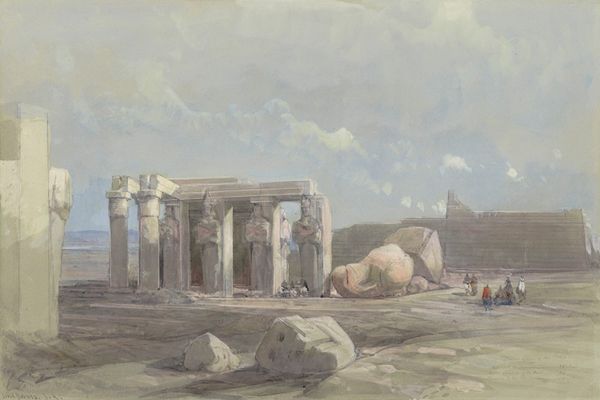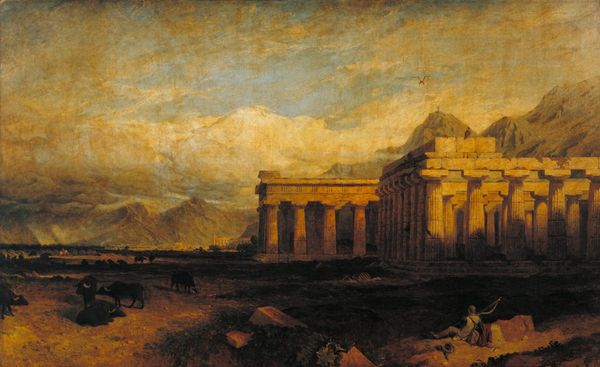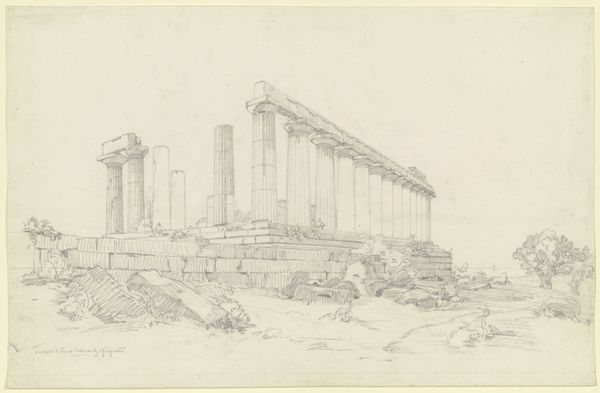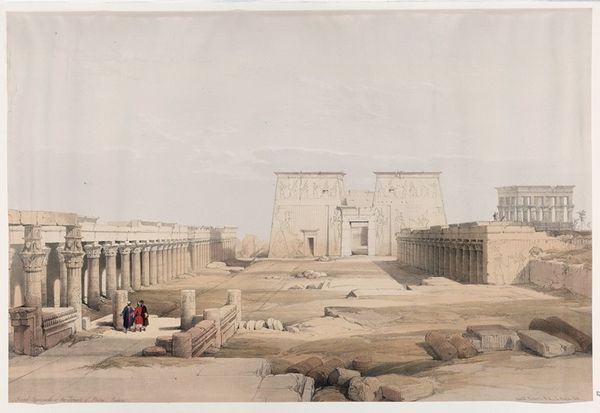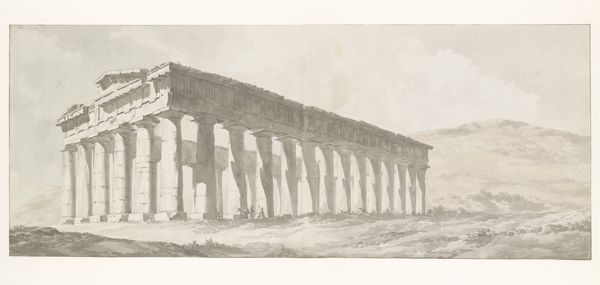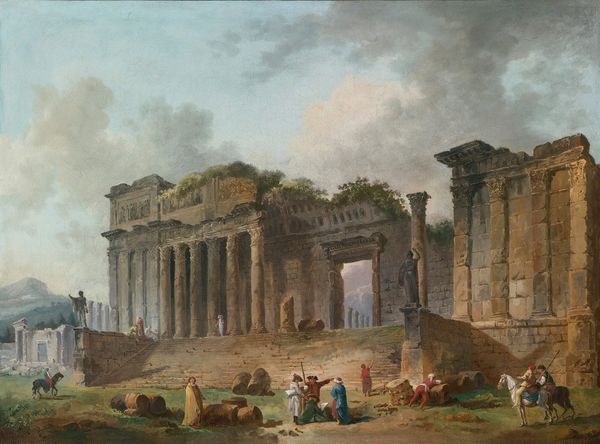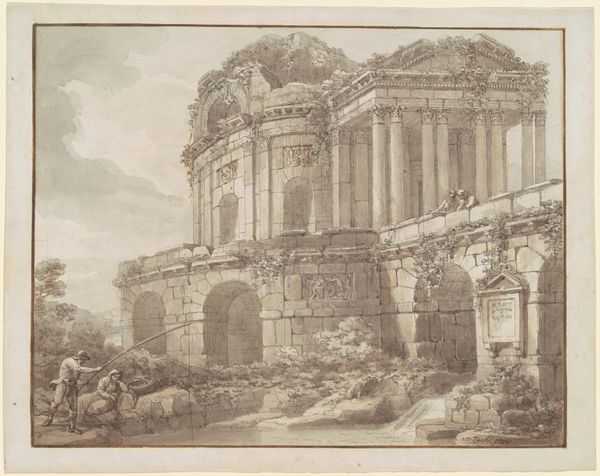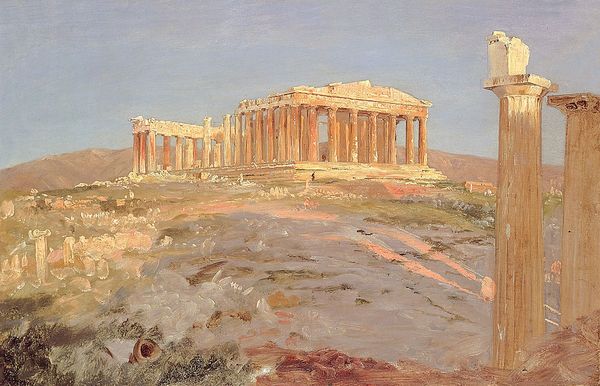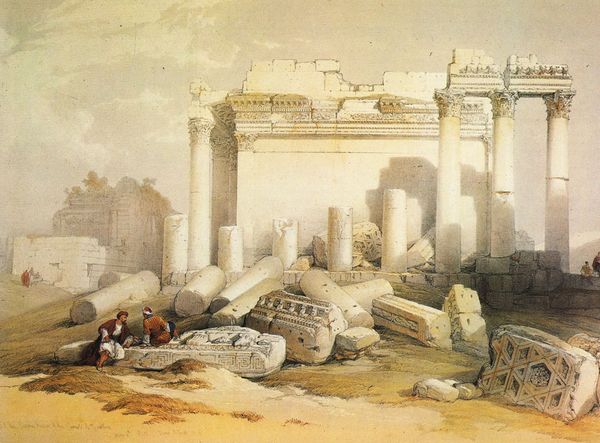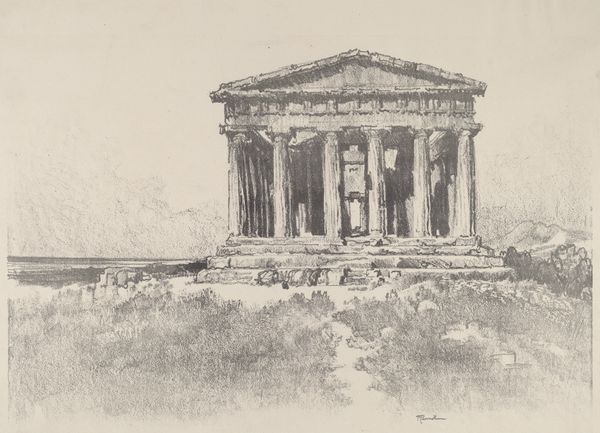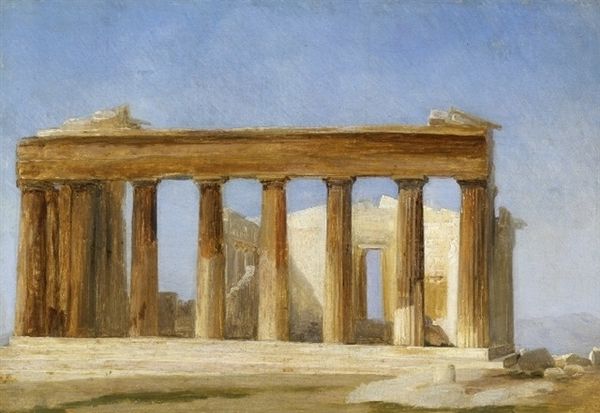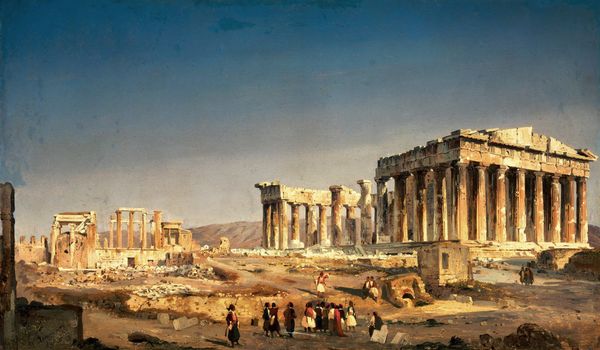
watercolor
#
neoclassicism
#
greek-and-roman-art
#
landscape
#
charcoal drawing
#
watercolor
#
romanticism
#
watercolour illustration
#
history-painting
#
watercolor
Copyright: Public Domain: Artvee
Curator: Good morning. Today we’re looking at "The Temple of Baalbec," a watercolor by David Roberts, created in 1839. Roberts was a master of architectural painting, capturing the grandeur of historical sites with incredible detail. Editor: What strikes me first is the light. It feels almost sepia-toned, like looking at a faded memory. Melancholic, even. I feel a certain awe for that ruined temple standing so stalwart against the sky, the toppled stones whisper forgotten stories. Curator: Indeed, it is an awe-inspiring ruin. Roberts’s work often focused on documenting archaeological sites and monuments, fuelled by the 19th-century European fascination with the "Orient," fueled in large part by colonial aspirations. These images served as both documentation and a way of exoticizing distant cultures, constructing particular ideas about history and place. Editor: Interesting…It makes you wonder about his intentions. Was it about preserving history, or more about feeding into a certain romanticism about far-off lands? I suppose both are possible! Also, there's such careful attention to rendering those columns – it almost feels photorealistic despite the dreamy washes of color. The detail, in its strange way, highlights all that has fallen apart. Curator: Precisely. His approach to Romanticism aligns with its artistic manifestation through Neoclassical compositional elements. We can think about how those elements contribute to a European narrative about antiquity while showcasing technical and artistic superiority. Editor: You know, standing here, the picture actually stirs in me a little anger. Who were those little tiny people in the distance! What are they thinking? It makes the ruin appear enormous, majestic even. As though time itself had bowed before it…but time can destroy everything, can’t it? Civilizations come and go; only dust remains. The more I think about it, the more the artist presents what will be and not just what was. Curator: Yes, it certainly prompts those kinds of reflections. That is perhaps the legacy of landscape painting in its role of communicating ideas about progress and decay. I agree. Editor: Absolutely. Curator: Thank you for these insights. I believe that is a wonderful final consideration of Robert’s artistic practice here at Baalbek.
Comments
No comments
Be the first to comment and join the conversation on the ultimate creative platform.
